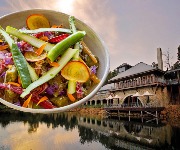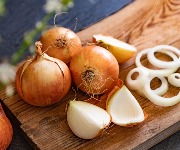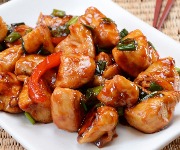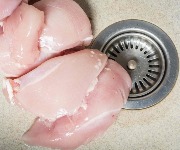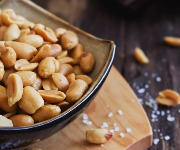Japanese Wagyu beef imported to the UK for the first time
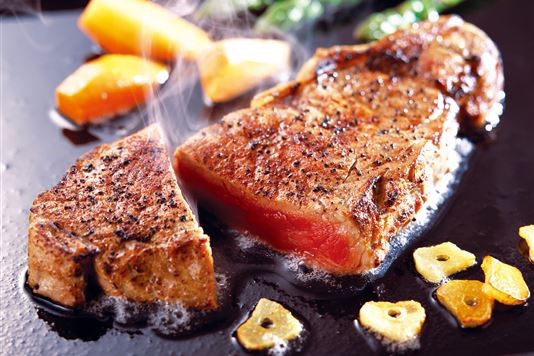
Japanese Wagyu beef is being sold in the UK for the first time, but just why is it so renowned?
You may have tried Wagyu beef before in the UK, but it hasn't come from Japan. Instead, it was likely reared in Australia, the US or New Zealand. Even Asda introduced its own ‘Wagyu’ beef in 2011, but its herd (actually a cross between a Holstein and the real deal) is raised in Wales.
Prior to now, Japan has not been allowed to export its beef due to BSE fears. Having been given the green light after applying for negligible BSE risk status in 2012, the Japan Livestock Industry Association will now oversee exports to the EU.
A little history
Cattle were originally used in Japan as working animals from around the 2nd century, to help with the ploughing of rice paddies. In the late 1800s, foreign breeds were introduced to the country, but in 1912 these imports were banned. It was 1944 when ‘Wagyu’ was approved as a fixed term for a certain set of cattle breeds.
Japan has actively sought to improve the quality of its beef over time, in terms of daily weight gain, meat quality, and so forth. They keep a close track of genetic lines and the yield and properties of the meat produced under the Wagyu banner.
What does ‘Wagyu’ mean?
‘Wagyu’ literally translates as ‘Japanese cow’ and actually refers to four breeds, though the 'Japanese Black' breed accounts for most of the cattle population in Japan.
Wagyu beef is famous for its marbling, which really is impressive, as you can see in the picture below. This is caused by a greater amount of intramuscular fat than lean cuts. Wagyu beef also contains a higher proportion of unsaturated fatty acid, and the melting point of the fat is low: it even begins to melt around room temperature!

When the beef cooks, the marbling breaks down and the meat gains a rich, full ‘umami’ (savoury) flavour and becomes incredibly succulent.
It’s very different to the beef that we are used to, as it is rather oily in comparison – but don’t misunderstand that as ‘greasy’, because there’s nothing remotely unpleasant about it.
Calves live outside with their mothers until they're around 10 months old, after which they’re sold at markets. They are then kept inside to fatten up, in conditions which were criticised by Raymond Blanc in a 2010 blog post.

However, Masayoshi Nakabayashi, Vice Chairman of the Japan Cattle Industry Co-operative (JCIC), insists that farmers treat their cows much like members of the family (albeit ones destined for the slaughterhouse) and report on their health and growth on a daily basis.
They are brushed regularly in an attempt to improve circulation and farmers apparently try to create a relaxing atmosphere for their animals during the fattening period. Farmers have been known to feed their cows beer or sake to stimulate their appetites in warm weather.
Tracing your steak’s roots and judging the quality
 The system in place to trace Wagyu cattle is probably one of the most in-depth animal tracing systems in the world.
The system in place to trace Wagyu cattle is probably one of the most in-depth animal tracing systems in the world.
Each cow is certificated at birth, with the certificate bearing the muzzle-stamp of the cow. That's essentially an equivalent of fingerprinting, as each is unique, just like the 10-digit number assigned to the cow which customers can track online, even using mobile devices. This ensures that authentic Wagyu can be sought out among imitators.
Look for the Wagyu Japanese Beef mark (pictured left) to ensure what you’re buying is really Japanese Wagyu. And if in doubt, test the item using the number.

Each cow is marked on a scale of A-C for its meat yield, and its quality is ranked on a scale of 1-5 (A and 5 are the top ends of these scales). 'A5' would note an outstanding Wagyu quality steak, 'A3' a lesser beast and, by way of comparison, 'C1' would be a dairy cow.
What I thought
I was invited to an event at the Japanese Embassy to learn about Wagyu beef and sample some for myself. It really is nothing like the beef we eat here; it's unbelievably juicy and has a full, rich flavour that sinks into the tongue as the meat melts in your mouth. It's astoundingly different and absolutely delicious.
The problem? The price
Because Japanese farmers put so much effort into raising their cattle, and the demand for this high quality meat, Wagyu attracts a premium unmatched by any other beef in the world. Due to the very limited grazing space in mountainous Japan, there are just 2.6 million cows in total, whereas the UK had 9.7 million in 2012. This restriction on cattle numbers pushes the price up too.

Shops in the UK have yet to confirm whether they will be stocking the meat, but realistically we can only expect to be able to buy it from very expensive specialist butchers. A 400g Wagyu ribeye sourced from Australia can cost around £37.50 (and up to almost £35 extra for top quality marbling). So imagine how much the real deal, a Wagyu steak sourced from Japan, is going to cost you.
Have you ever tried Wagyu beef? Is something that expensive ever going to be worth it? Are you more than happy to make do with alternatives, or would you be interested in putting the money into a one-off taste?
You might also like:
Cold rare roast beef with dill and mustard recipe
Most Recent
Comments
Be the first to comment
Do you want to comment on this article? You need to be signed in for this feature


